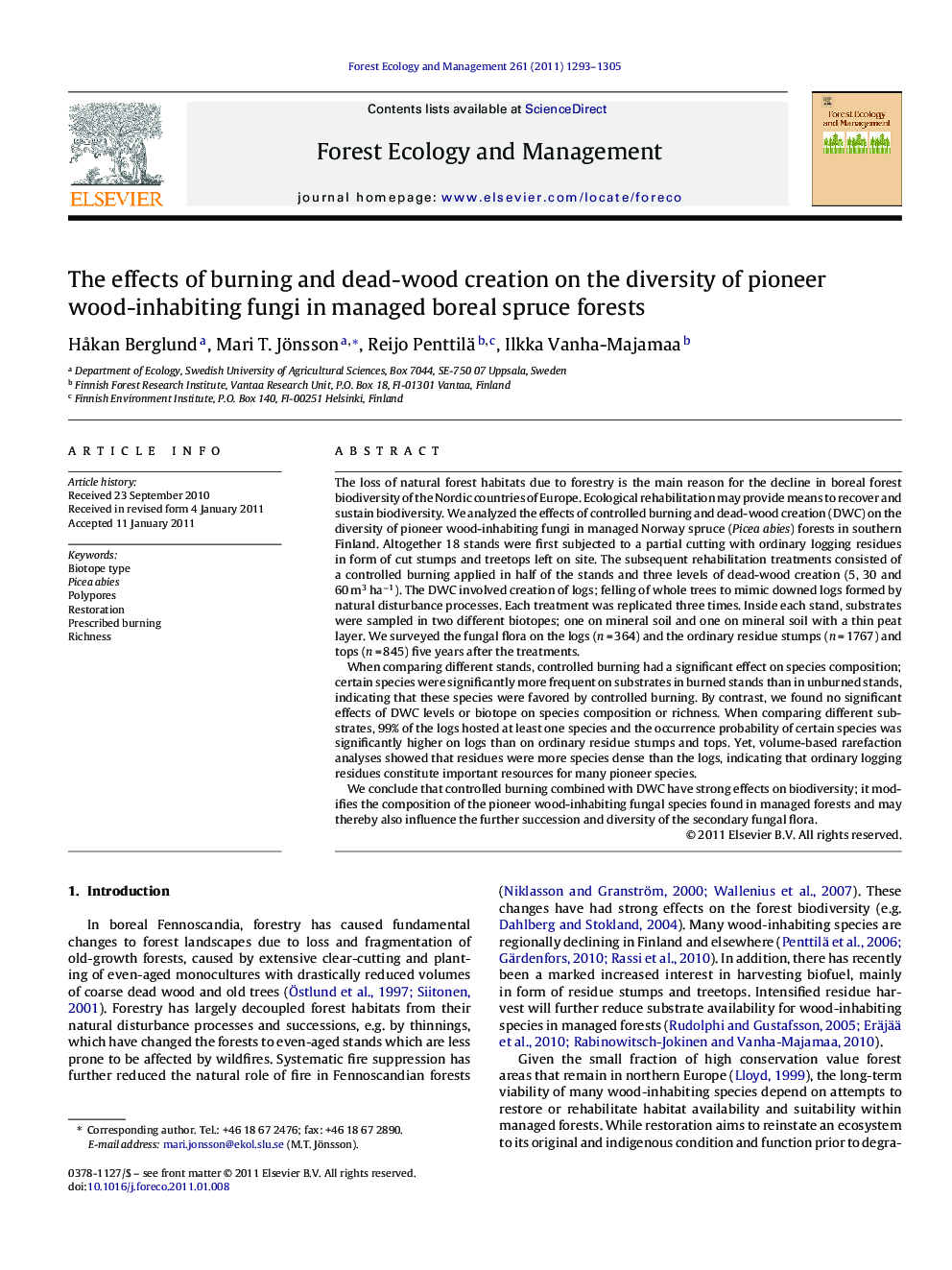| کد مقاله | کد نشریه | سال انتشار | مقاله انگلیسی | نسخه تمام متن |
|---|---|---|---|---|
| 87739 | 159264 | 2011 | 13 صفحه PDF | دانلود رایگان |

The loss of natural forest habitats due to forestry is the main reason for the decline in boreal forest biodiversity of the Nordic countries of Europe. Ecological rehabilitation may provide means to recover and sustain biodiversity. We analyzed the effects of controlled burning and dead-wood creation (DWC) on the diversity of pioneer wood-inhabiting fungi in managed Norway spruce (Picea abies) forests in southern Finland. Altogether 18 stands were first subjected to a partial cutting with ordinary logging residues in form of cut stumps and treetops left on site. The subsequent rehabilitation treatments consisted of a controlled burning applied in half of the stands and three levels of dead-wood creation (5, 30 and 60 m3 ha−1). The DWC involved creation of logs; felling of whole trees to mimic downed logs formed by natural disturbance processes. Each treatment was replicated three times. Inside each stand, substrates were sampled in two different biotopes; one on mineral soil and one on mineral soil with a thin peat layer. We surveyed the fungal flora on the logs (n = 364) and the ordinary residue stumps (n = 1767) and tops (n = 845) five years after the treatments.When comparing different stands, controlled burning had a significant effect on species composition; certain species were significantly more frequent on substrates in burned stands than in unburned stands, indicating that these species were favored by controlled burning. By contrast, we found no significant effects of DWC levels or biotope on species composition or richness. When comparing different substrates, 99% of the logs hosted at least one species and the occurrence probability of certain species was significantly higher on logs than on ordinary residue stumps and tops. Yet, volume-based rarefaction analyses showed that residues were more species dense than the logs, indicating that ordinary logging residues constitute important resources for many pioneer species.We conclude that controlled burning combined with DWC have strong effects on biodiversity; it modifies the composition of the pioneer wood-inhabiting fungal species found in managed forests and may thereby also influence the further succession and diversity of the secondary fungal flora.
Research highlights
► Controlled burning had a positive effect on the diversity of wood-inhabiting fungi.
► Controlled burning diversified the composition of the pioneer fungal communities.
► Dead-wood creation had a positive effect on the occurrence probability of many fungal species.
► Logs and ordinary logging residues (stumps and treetops) hosted different fungal assemblages.
► Ecological rehabilitation is a useful tool to recover and sustain biodiversity in managed forests.
Journal: Forest Ecology and Management - Volume 261, Issue 7, 1 April 2011, Pages 1293–1305